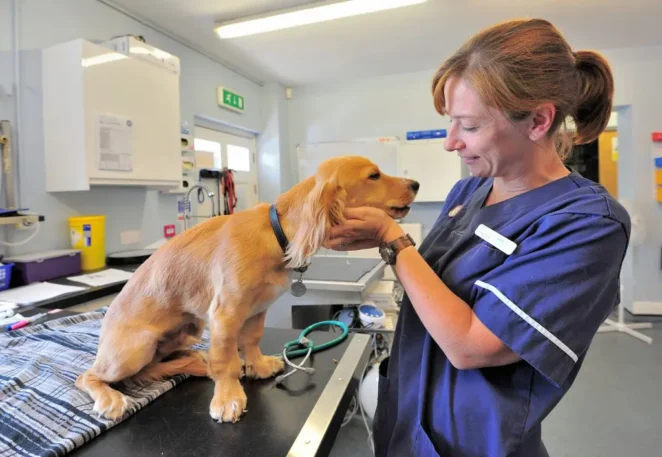Pet insurance has become increasingly popular among pet owners in recent years. It provides peace of mind and financial protection in the event of unexpected accidents or illnesses. However, the cost of pet insurance can vary significantly based on various factors. In this article, we will explore the impact of breed and age on pet insurance costs.
Pets are an important part of our lives, and their well-being is a top priority for many owners. With rising veterinary costs, pet insurance has emerged as a valuable tool to manage expenses related to pet healthcare. Understanding the factors that influence pet insurance costs can help owners make informed decisions and find the most suitable coverage for their furry companions.
Understanding Pet Insurance

Before delving into the impact of breed and age on pet insurance costs, it is essential to have a basic understanding of pet insurance itself. Pet insurance works similarly to human health insurance, covering a portion of veterinary costs for illness, accidents, and sometimes preventive care. It typically involves a monthly premium, deductible, and reimbursement percentage.
Factors Affecting Pet Insurance Costs
Several factors contribute to the determination of pet insurance costs. Among them, breed and age play crucial roles. For reference, check Fetch pet insurance policies and coverages to get a full picture what factors are cruical. Let’s explore each of these factors in detail.
Breed
Different breeds have varying levels of susceptibility to certain health conditions and genetic predispositions. Some breeds may be more prone to develop hereditary diseases or have a higher risk of accidents. As a result, insurance companies often factor in breed-specific risks when calculating premiums.
Age
Age is another significant factor that impacts pet insurance costs. Just like humans, pets are more likely to require medical attention as they age. Young pets may have fewer pre-existing conditions, making them less risky to insure, while older pets may have a higher likelihood of developing age-related health issues.
The Impact of Breed on Pet Insurance Costs

Certain breeds are associated with higher insurance costs due to their unique characteristics and health risks. It’s important to consider these breed-specific factors when choosing insurance coverage.
Popular Breeds and Their Insurance Costs
Popular dog breeds such as Labrador Retrievers, Golden Retrievers, and German Shepherds are generally more expensive to insure. This is mainly because they are prone to certain conditions like hip dysplasia and allergies, which require frequent veterinary visits and treatments.
Breeds Prone to Health Issues
Some breeds have a higher predisposition to specific health issues. For example, Bulldogs and French Bulldogs often suffer from respiratory problems, while Cavalier King Charles Spaniels are more susceptible to heart diseases. Insuring these breeds may come with higher premiums due to their increased risk of developing these conditions.
The Impact of Age on Pet Insurance Costs
Age is a significant determinant of pet insurance costs. Let’s explore how insurance premiums can vary based on different age groups.
Young Pets

Puppies and kittens generally have lower insurance costs compared to older animals. Since they are less likely to have pre-existing conditions or age-related health issues, insurance providers often offer more affordable premiums for young pets. However, it’s important to note that premiums may increase as the pet ages.
Adult Pets
Adult pets, typically between the ages of 1 and 7, may still enjoy relatively lower insurance costs compared to senior pets. They are generally considered to be in their prime health and are less likely to develop age-related conditions. However, the specific premium rates can vary depending on the breed, overall health, and previous medical history of the pet.
Senior Pets
Senior pets, typically over the age of 7 or 8, often require more frequent medical attention and are more prone to age-related health issues. As a result, insurance premiums for senior pets tend to be higher to account for the increased risks and potential medical expenses.
Other Factors Influencing Pet Insurance Costs
While breed and age are two significant factors impacting pet insurance costs, there are other variables to consider as well. These may include the coverage type and level, geographical location, deductible amount, and the insurance provider’s pricing structure. It’s crucial to evaluate these factors comprehensively when selecting the right insurance plan for your pet.
Tips to Lower Pet Insurance Costs

Pet owners looking to manage their pet insurance costs can consider the following tips:
- Compare different insurance providers: Research and compare multiple insurance companies to find the most suitable coverage at a competitive price.
- Opt for a higher deductible: Choosing a higher deductible can lower monthly premiums, but make sure you can comfortably afford the deductible amount if needed.
- Consider wellness plans: Some insurance providers offer optional wellness plans that cover preventive care, vaccinations, and routine check-ups. Assess if including wellness coverage aligns with your pet’s specific needs.
- Maintain a healthy lifestyle: Keeping your pet in good health through regular exercise, a balanced diet, and preventive care can reduce the likelihood of expensive medical conditions.
- Enroll your pet at a young age: Insuring your pet when they are young and healthy can help lock in lower premiums before any potential health issues arise.
Conclusion
Breed and age are significant factors that influence pet insurance costs. Different breeds have varying genetic predispositions and associated health risks, while age plays a role in the likelihood of developing age-related conditions. Understanding these factors allows pet owners to make informed decisions when selecting insurance coverage that best suits their pet’s needs and budget.
FAQs (Frequently Asked Questions)
- Is pet insurance worth it? Pet insurance can be highly beneficial in providing financial security for unexpected veterinary expenses. It helps alleviate the burden of high medical costs, ensuring your pet receives the necessary care without financial strain.
- Can I get insurance for older pets? Yes, many insurance providers offer coverage for older pets. However, premiums may be higher due to the increased likelihood of age-related health issues.
- Does pet insurance cover pre-existing conditions? Typically, pet insurance does not cover pre-existing conditions. It’s important to review the policy terms and conditions to understand the coverage limitations.
- Are there any exclusions in pet insurance policies? Yes, pet insurance policies may have exclusions for certain conditions, such as pre-existing conditions, elective procedures, and breeding-related expenses. It’s crucial to review the policy details thoroughly.
- Can I switch pet insurance providers? Yes, you can switch pet insurance providers. However, it’s important to consider any waiting periods, coverage limitations, and pre-existing condition policies when making the switch.



